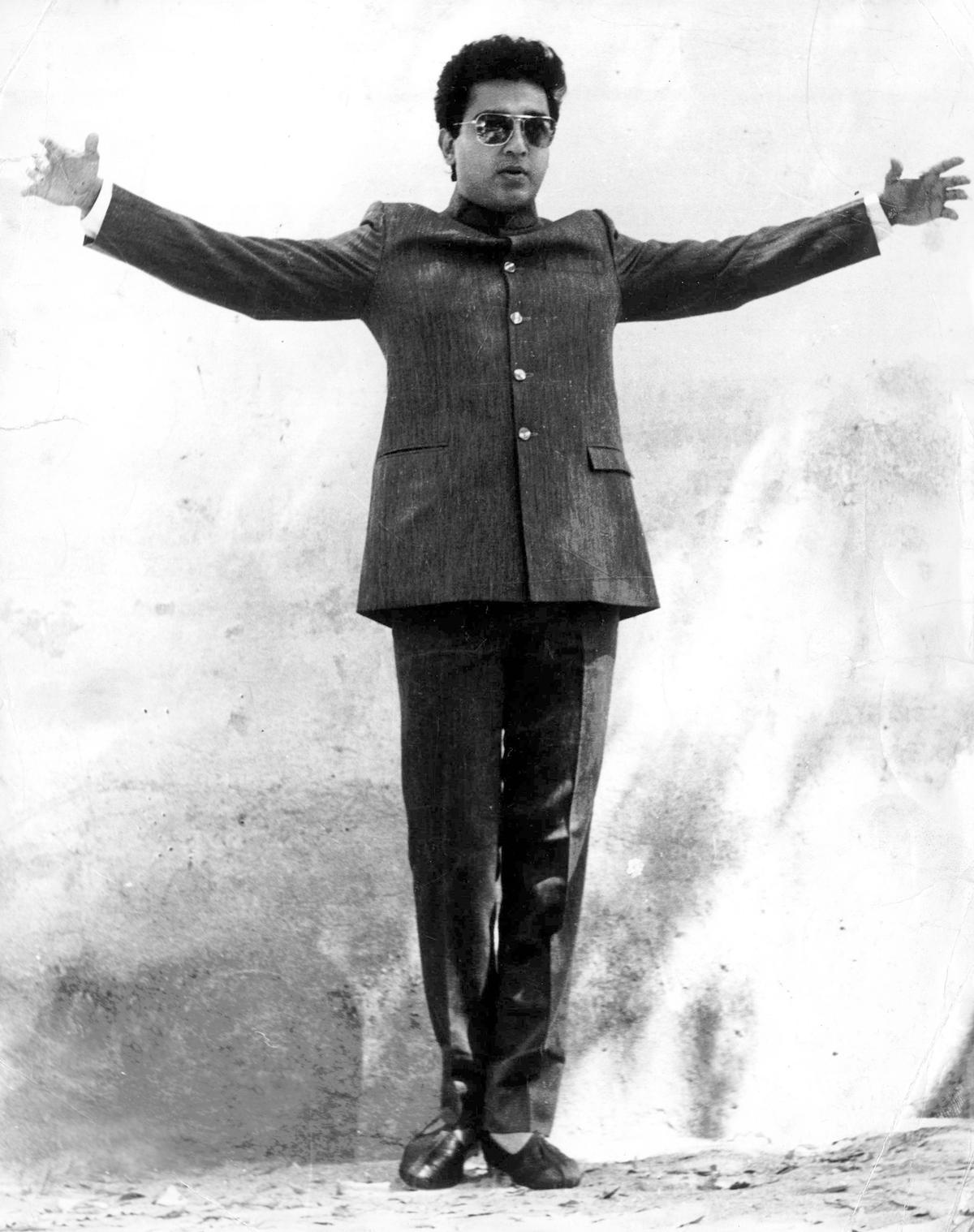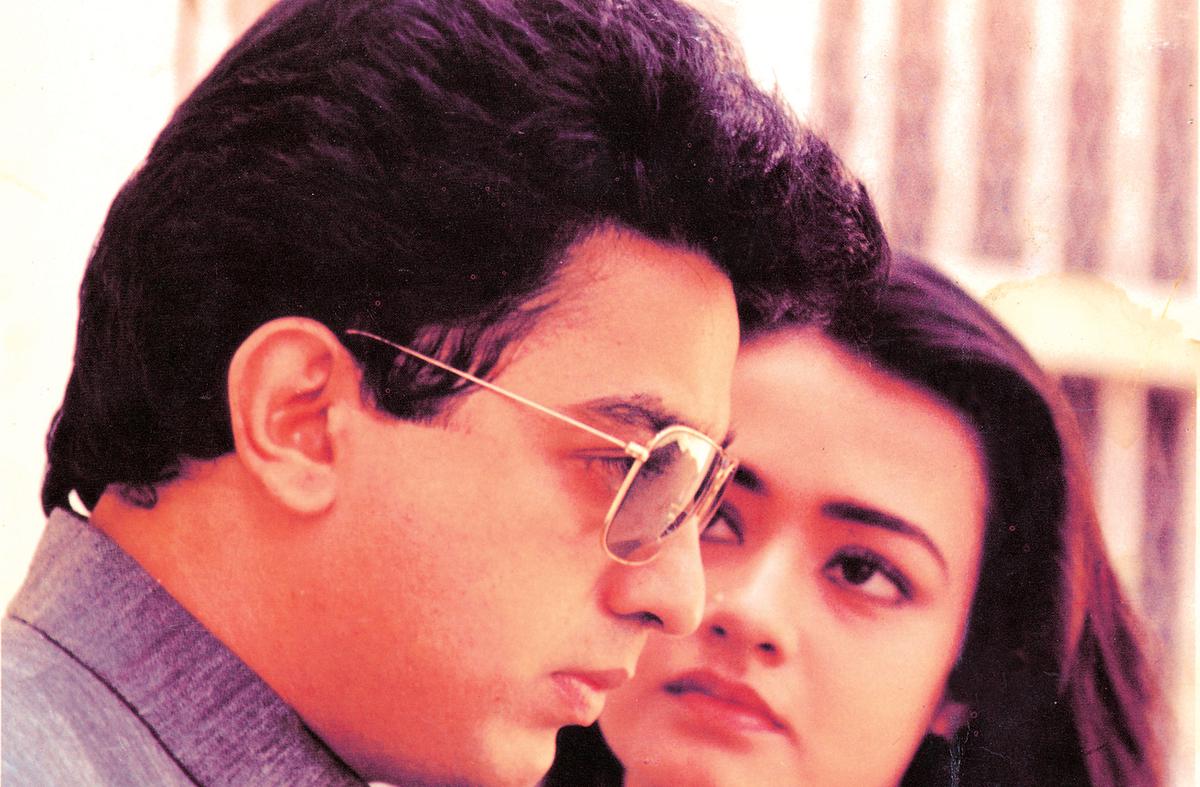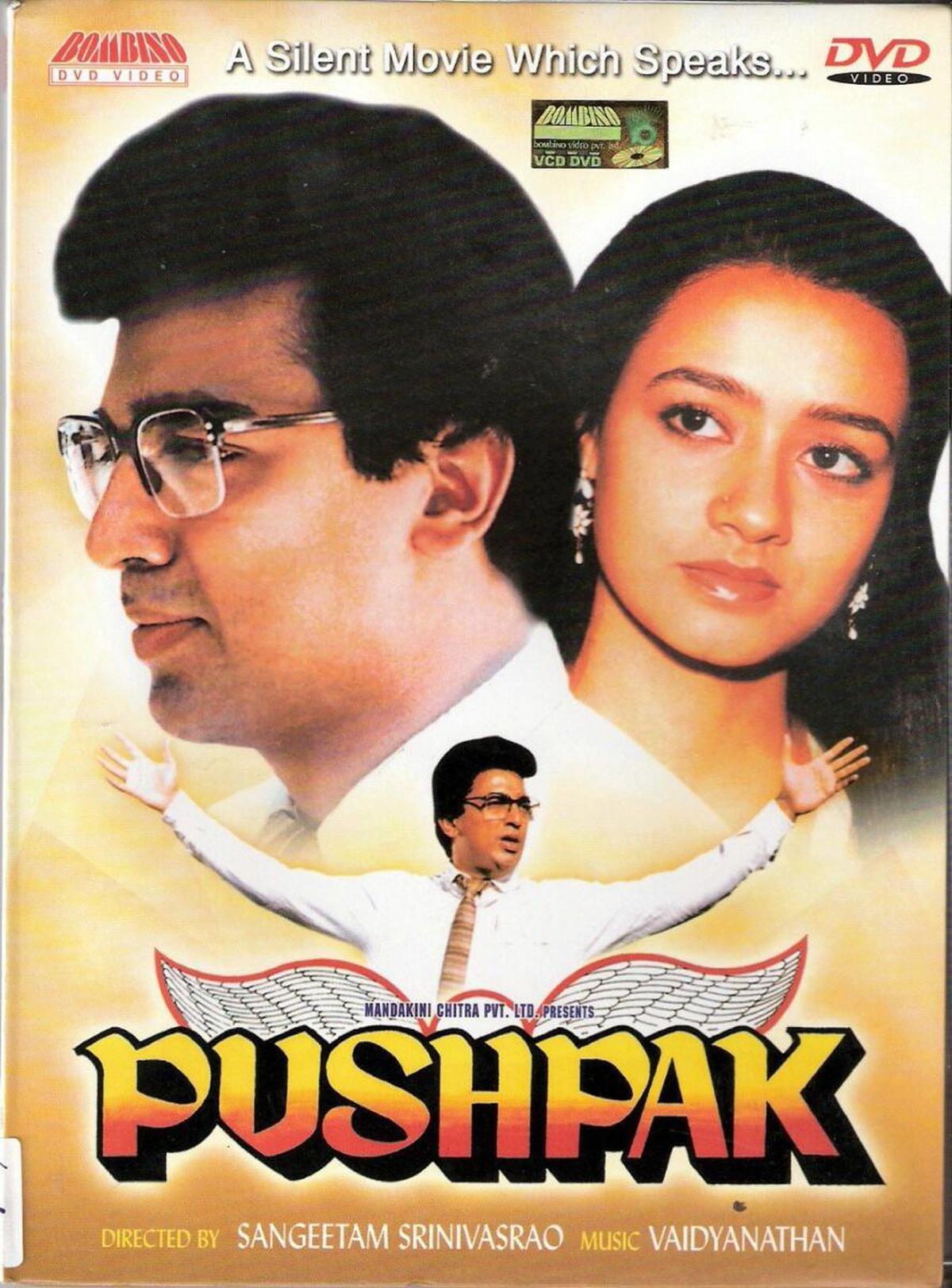An unemployed man gets ready for a potential job interview. He waits in a never-ending queue in front of a board that reads, TEMPORARY VACANCIES. Haunted by homelessness and poverty, he cuts the queue by taking someone else’s place, only to be pushed to the back end of the line. He repeats the same when the man takes on, rather than steals the identity of, a rich man and decides to live a luxury life that he never dreamed of.
It has comedy as well as tragedy.
Thirty-five years ago, Singatem Srinivasa Rao dreamed what no other Indian filmmaker could: making a film without dialogue Pushpak (1987) – The first Indian film after the silent era to be released without dialogue. As most would assume and rightly so, it was not courage that inspired Singatem. “It was kind of crazy,” he laughs, when we meet at his Chennai residence on a warm winter morning.
“Suppose you tell a child not to go near the fire. But the child would want to touch and feel it. I had that thrill,” says Singatem. Pushpak [starring Kamal Haasan and Amala Akkineni] There was fire.
Singeetham has come a long way in cinema, starting out as a dialogue writer for filmmaker KV Reddy, who assisted him in the historical Telugu film, Mayabazar (1957). He grew up on a steady diet of American and European cinema, which had a rich history of silent era films.
“That became the bedrock of filmmaking for him. While talkies became our base. We started creating mythology from stage plays. They were not films, they were stage plays put on the screen. Since then, the culture of photographing stage plays has continued for a long time,” Singatem laughs. “Only in Indian cinema there is a title called dialogue writer. Nowhere.”
Singeetham Srinivasa Rao says he could not have made ‘Pushpak’ without Kamal Haasan. Photo credit: Johan Satyadas
Singatem often met people who asked him why he made Pushpak Without dialogues. “I ask them, ‘Why should someone climb the Himalayas and hoist the national flag there? They can comfortably sit at home and have breakfast. Why take the trouble?’ Because it is an achievement.
Decades long experience, now locked in his head in the form of memories, comes out like pearls when the filmmaker speaks. Singeetham comes from a school that believed in maintaining silence, thereby ending the clamor on film sets. This was not an option, as they shot with a Mitchell camera, which came with sync-sound.
“The actors would recite their dialogues and the recording was done on set with boom mics,” he recalls, “we rehearsed before going in for the take. That way Mayabazar was shot. There was no concept of dubbing except some patch work.”
A camera like Mitchell’s would probably have solved most of his logistical challenges. Pushpak, However, the camera was heavy and was no longer in vogue. This was the dawn of Arriflex cameras. “When Ariflex came along, making films became easier. Cameras are rolling, actors are saying their lines, there’s noise, and people are always talking on set.”
singetam screamed silence Pushpakset of. “That was the difficult part,” he laughs, “with that kind of discipline in the film industry at that time, I came and shouted silence. But nobody was silent.”
For real ambient sound, the filmmakers decided to shoot the scenes twice. “Suppose Kamal opens the fridge and chocolate falls out of it, we asked Kamal to do this a second time just to capture the sound. It is difficult to recreate this natural sound,” he says.
great tragedy
in the guise of a tragicomedy, Pushpak is about crushing ironies that scream at you: feces wrapped in a smelly box; An unemployed youth with empty pockets feels envious of a beggar and the bundle of notes he has; An ice knife is the weapon of choice in a cold-blooded murder; Being a dialogue-less film, it was released as pesum padam (talkie picture) in Tamil.
All in all, the outrageous irony is the romance between Kamal and Amala that blossoms at a memorial service; Apparently it surprised even stalwarts like Satyajit Ray and Raj Kapoor.
He said, “I have seen a lot of romantic films and made many myself. This is the first time I am seeing a love scene around a dead body, wow,” commented Kapoor, when he was once in Bangalore Met Singatem.

Kamal Haasan in the Tamil film ‘Pesum Padam’ | Photo Credit: The Hindu Archives
Singetam’s writing has a hint of the Marx Brothers, while the acting is heavily derived from Charlie Chaplin, “definitely an influence. [on Chaplin], Not only in me but also in the lotus. You can’t avoid it,” he says.
“Chaplin had to do it in 18 frames in the silent era. That made it look a bit unnatural. We didn’t want it to be a silent film. The script was worked out in such a way that there was no need for dialogue. Suppose there is some space for dialogue, like a drunkard who wants to talk like a lotus covering his mouth with a piece of cloth. That’s why the acting and performance feel real.”
Pushpak Was the culmination of so many interesting ideas that didn’t make the cut in the final film. For example, Singatem recounts a personal memory of a time a thief tried to steal his daughter’s handbag when they lived in T Nagar.
“My wife gifted the bag to my daughter. It looked heavy from outside. This guy set up a pole in our room and stole the bag, but left unharmed. My daughter had packed all the bus tickets, papers and small stones in the bag. But that purse is still an asset to the thief,” laughs Singatem.
Singatem had the visuals and overall design in mind; However, a lot came together during the making. Opening the sacks full of cash in a dramatic manner, like the scene between Kamal and PL Narayan (who plays the beggar), was an afterthought.
“There are certain things I don’t believe in writing because there won’t be vitality. If you write everything mechanically, it becomes a stage play. I wanted my actors to get into it, only then would there be vitality. ,” he says, “It was a big relief for people like Kamal, Amala and Gaurishankar. [cinematographer],
For a dialogue-free film, the performances of the lead actors have to be pure and remain key to keep the audience engaged, agrees Singatem. In one of the now-iconic scenes from the film, Kamal and Amala are standing on the balcony of their respective suites conversing with hand gestures.
These are usually separate shots of the actors, where they imagine the other actor to be present and acting. I was not Pushpak, All the actors were present all the time, whether they had a scene or not.
“When we were taking the shot of Kamal on the balcony, Amala was doing her act on the opposite side and vice versa. They were basically acting and reacting,” he says.

Kamal and Amala in ‘Pushpak’ | Photo Credit: The Hindu Archives
singetam doesn’t like this talk too much About actor Kamal. “What else can I say about his acting? It’s like saying that fish swim really well.”
But Amala was actually a find.
They first came to know about him through a Telugu film, in which he was asked to deliver dialogues in a melodious style. He is not that person, Singatem thought.
“She had a lovely face and wonderful skin that when the light fell on her cheeks, it bounced. I thought he was the best for a film without dialogues. I wanted someone whose face looked fresh on screen – like Audrey Hebburn Roman Holiday,
Turns out, Amla is right. He called Singeetam a “riot” in an interview. “Half his sentence would be laughter,” she said, and now you understand why.
Singatem knew this was the performance that was meant to stay. “I don’t believe in karma. But when so many things come together [for a film like Pushpak]I am forced to believe in the theory of karma,” he says.
abnormal twins
Discovery of a young filmmaker or audience Pushpak For the first time, perhaps this can be considered an “adventure experiment”. Was this what Singatem thought 35 years ago? “I thought it was the most commercial film,” he said before laughing.
“What is commercial? When you have a star like Kamal, it automatically becomes a commercial film; it does not matter whether it is made in Tamil or Telugu. Whereas a Kamalhasan film like Pushpak Runs in all languages. Which is more commercial? A Tamil language Kamal film or a non-language film with Kamal?
It was 1987 when Kamal was at the height of superstardom. Pushpak This was possible only because a star like him was ready to support the director, sharing the same enthusiasm and maybe even craziness. “Is it possible to make a film about Hiranyakashipu without Ranga Rao? can you Mayabazar Without Gatotkachan? Amitabh Bachchan is a superstar. but can you cast him as krishna [one can only think of NTR], Similarly, I could not make Pushpak either Apoorva Sagodhargal Without Kamal Haasan.

A poster of ‘Pushpak’ | Photo Credit: The Hindu Archives
Among the filmmakers Kamal Haasan has worked with, Singatem is considered the “youngest”; You can’t help but agree with that. At 92, Singatem has a rare passion for cinema; And childlike glee when he speaks, not necessarily about his films – “The day I talk about myself, I’ll be irrelevant.”
his energy is infectious and he Even then full of ideas; Singatem informed that a 3D animated picture on the life of Indian biochemist Yellapragada Subbaro is in the works. a man who doesn’t romance past glory Nor does he believe in looking back, with the legendary filmmaker seeking to create the “first graphic film” by combining the idea of graphic novels and cinema as a medium.
“What is this film, you ask? I’ll tell you later. Let it be suspense for now,” he laughs.
Singatem is not yet complete.
Even when a personal tragedy struck him – the filmmaker lost his wife Lakshmi Kalyani earlier this year – Singatem moved on slowly.
“It was a 60-year-long marriage,” he says, “my wife was always full of positive thoughts. The first three days after losing her were tough; I wasn’t myself. On the fourth day it was as if she was telling me ‘Singeetam, how long will you mourn for me? Go, work… make films’.